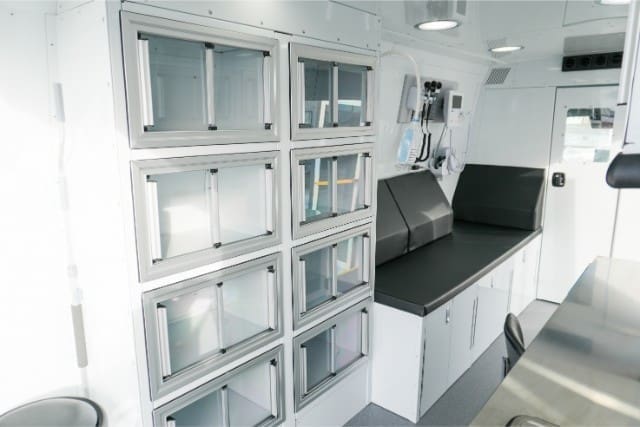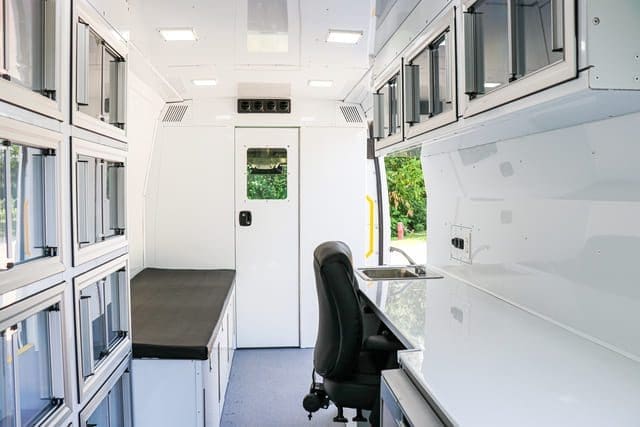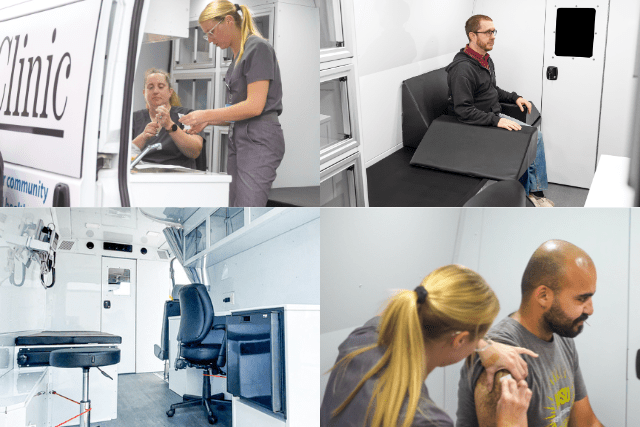Every year, millions of people wait hours in the ER for care that could have been handled elsewhere. In fact, nearly 30% of ER visits could be avoided. But without other options, people keep showing up. Community paramedicine can fill the gap by keeping people out of the ER, saving on healthcare costs, and improving lives.
If you run a community health center, municipal healthcare program, or rural clinic, you see the problem every day. Hospitals are overcrowded. Emergency responders are stretched thin. Chronic disease is out of control. And too many people don’t get help until it’s an emergency.
The problem? Traditional healthcare is built around hospitals and clinics. But what if care could come to patients instead? What if trained paramedics could provide chronic disease management, preventive healthcare, and urgent care right in the community?
Welcome to community paramedicine.
At MoveMobility, we’ve spent over 20 years helping healthcare teams bring care to the people who need it most. Our Ford QVM and Stellantis QPro-certified mobile medical vehicles remove barriers to healthcare. We’ve worked with teams like yours and Quest Community Health Centre across North America to solve real healthcare challenges.
This article covers five major benefits of community paramedicine, including:
- Reducing ER wait times and hospital congestion
- Improving chronic disease management
- Lowering healthcare costs
- Expanding preventive healthcare access
- Enhancing patient outcomes and quality of life
1. How can community paramedicine reduce ER wait times?
ER wait times in Canada are worse than ever. Some patients wait over 22 hours for a hospital bed. Overcrowded hospitals and limited staff mean many people don’t get the care they need, when they need it.
Many ER visits aren’t emergencies. Research shows that:
- 1 in 3 ER visits in Ontario could be managed outside the hospital.
- People without access to primary care use the ER for non-urgent issues.
- Chronic disease flare-ups send patients to the ER when early intervention could have prevented it.
Community paramedicine keeps ERs from overflowing. Instead of sitting in a waiting room for hours, patients receive care at home. In Nova Scotia, a community paramedicine program reduced ER visits by 40%.
Without solutions like community paramedicine, ER congestion will only get worse. Patients will wait longer, hospital resources will stay stretched thin, and avoidable ER visits will keep piling up. Expanding mobile healthcare services helps deliver faster, more accessible care, without overwhelming the system.
2. How does it improve chronic disease management?
Living with a chronic disease isn’t easy. Conditions like diabetes, heart disease, and asthma need regular care. When people miss check-ups or don’t have access to care, small problems can turn into serious health emergencies.
Getting help isn’t always as simple as hopping in the vehicle and driving down the road to the nearby clinic.
Many people struggle with:
- Transportation issues that make it hard to get to appointments
- Long wait times to see doctors or specialists
- Limited access to healthcare, especially in rural areas
Community paramedicine helps people stay on top of their health. In Ontario, a program called CP@clinic brings healthcare directly to people living in social housing. Paramedics check blood pressure, offer health advice, and connect patients with doctors. This program has led to fewer emergency calls and better health outcomes.
Regular care at home makes a huge difference. Paramedics help catch problems early, so patients don’t end up in the ER. With community paramedicine, people get the care they need, when they need it, without the stress of hospital visits.
3. How does community paramedicine lower healthcare costs?

Canada’s healthcare system is publicly funded, but that doesn’t mean it’s free. Every hospital visit and ER stay is paid for through taxpayer dollars. The more people use emergency services for non-urgent issues, the more strain it puts on healthcare budgets and resources.
Unnecessary ER visits add up fast. In Canada:
- A single ER visit can cost up to $1,500, all funded by the healthcare system.
- Millions of dollars go toward treating chronic diseases that could have been managed at home.
- Overcrowded ERs slow down care for patients who need it the most.
Community paramedicine helps reduce these costs by:
- Keeping people out of the ER when they can be treated at home.
- Providing care earlier so small health problems don’t turn into major emergencies.
- Reducing hospital stays by managing chronic diseases before they get worse.
The less strain on emergency services, the better care hospitals can provide. Community paramedicine makes sure patients get the right care in the right place, helping the healthcare system run more efficiently while keeping costs under control.
4. How does community paramedicine expand access to preventive healthcare?
Getting regular check-ups is much more difficult than it needs to be for some who live far from community healthcare centres. Others can’t get to appointments because of mobility issues, lack of transportation, or busy schedules. Many wait until they’re seriously sick before seeking help, when it could have been prevented.
Preventive healthcare helps people stay healthier and avoid hospital visits. Catching health problems early means they can be treated before they get worse. But when care isn’t easy to access, people miss out on these life-saving check-ups.
Community paramedicine brings preventive care to people’s communities instead of making them come to it.
Programs across Canada send trained paramedics into homes, senior living communities, and rural areas to provide things like:
- Blood pressure checks to catch heart disease early
- Blood sugar monitoring to help manage diabetes
- Health screenings to spot risks before they turn into serious conditions
These small steps make a big difference. Preventive healthcare reduces hospital visits, improves quality of life, and helps people stay independent longer. With community paramedicine, healthcare comes to the patient before a minor issue turns into an emergency.
5. How can community paramedicine improve the quality of life for patients?

Healthcare shouldn’t take over a person’s life. No one wants to spend hours driving to a doctor’s office, sitting in a waiting room, and then waiting even longer for treatment, especially for something minor. But for many people, that’s the reality of getting care.
Community paramedicine gives people their time back. Instead of rearranging their entire day to see a doctor, patients get care where they are at home, at work, or in their community.
This makes life easier, especially for:
- Seniors who struggle with mobility and can’t easily get to a clinic.
- People in rural areas who would otherwise drive hours for an appointment.
- Busy families and workers who don’t have time to sit in an ER for a non-urgent issue.
- Patients with anxiety or medical fears who feel more comfortable receiving care at home.
- Those with chronic pain or disabilities who find travel physically exhausting.
Less time spent travelling and waiting means more time for what really matters. Patients can focus on work, family, and daily life without the stress of healthcare delays. Community paramedicine removes the hassle of getting care, helping people live their lives without unnecessary disruptions.
Community paramedicine is changing healthcare: Is your organization ready?
You’re likely here because you’ve recognized that healthcare isn’t working the way it should. ERs are overcrowded, too many people can’t get the care they need, and preventable health issues are turning into full-blown emergencies. It’s frustrating, exhausting, and putting a huge strain on both patients and healthcare teams.
But now, you know there’s a better way. Community paramedicine is helping fix these gaps by:
- Cutting down ER wait times by treating patients where they are.
- Helping people manage chronic conditions before they become emergencies.
- Saving healthcare dollars by preventing costly hospital visits.
- Bringing preventive care to more people so they stay healthier longer.
- Making healthcare more accessible and less disruptive to daily life.
At MoveMobility, we build solutions that organizations like yours use to save lives all over Canada. We know the challenges you’re up against, and we’re here to help you find the right solution to reach more patients and improve care in your community.
Got any questions about community paramedicine? Click the button below to talk to a mobility expert.
Not quite ready? Check out our other resources to learn more about how mobile healthcare is transforming communities like yours.
Start by reading our article on how to apply for funding for mobile medical vehicles.
After that, learn what medical equipment you can get customized into a mobile clinic for your community paramedicine program!





